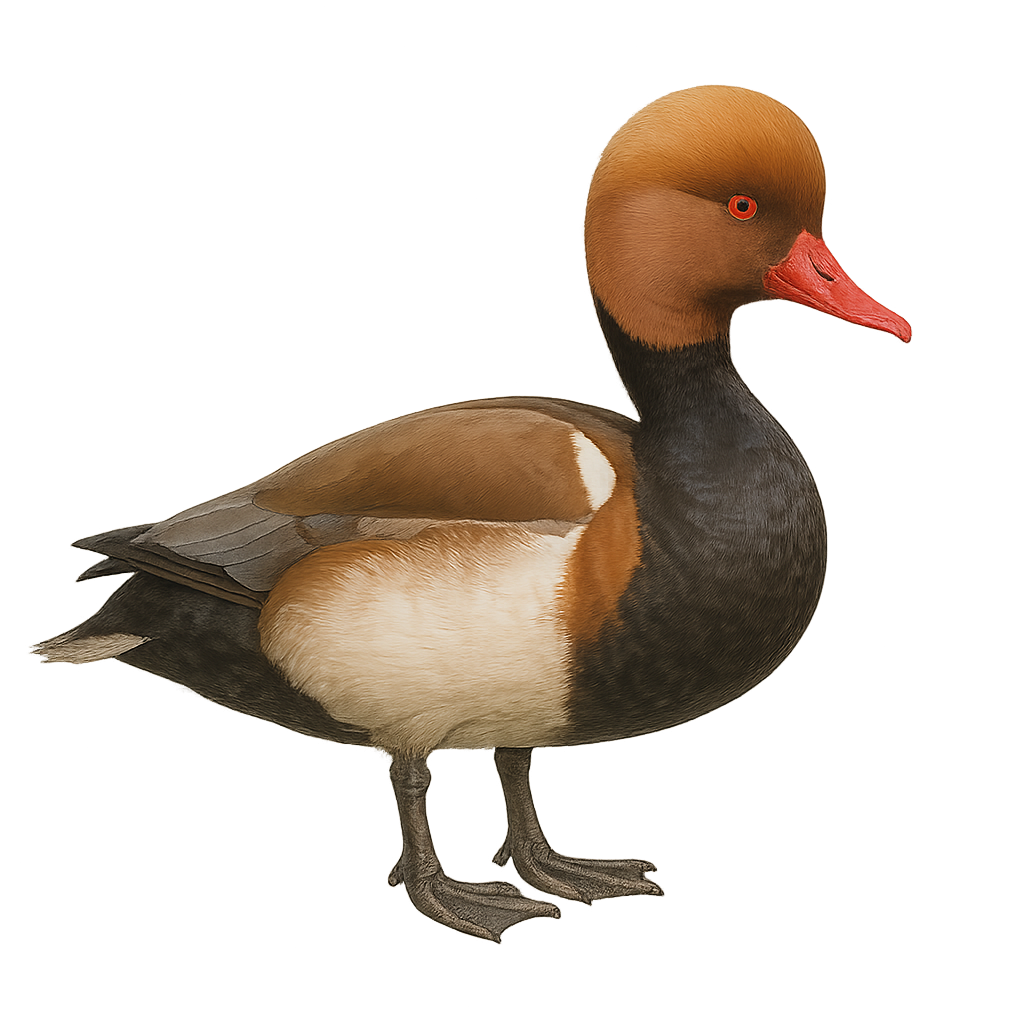Observe and photograph a species in its natural habitat
Learn where and when to observe a species in the wild, how to recognize it in the field, and what habitats it lives in. Get photography tips adapted to its behavior and capture stunning images without disturbing the animal. For full details, open the complete profile in the WildlifePhotographer app.
Red-crested Pochard
Scientific name: Netta rufina

IUCN Status: Least Concern
Family: ANATIDAE
Group: Birds
Shyness: Not very shy
Safe distance: 30 m
Breeding season / Courtship: 15.04-15.06
Gestation: 26 à 28 jours
Births: 15.05-15.07
Habitat:
Eutrophic lakes, ponds rich in aquatic vegetation, reed beds
Description:
The Red-crested Pochard is a medium-sized diving duck, measuring between 53 and 58 cm in length with a wingspan of 84 to 88 cm. The male is notable for its rounded, bright reddish-orange head, vivid red bill, black chest, and white flanks. The female is more subdued, with brown plumage, pale cheeks, and a dark bill. This species inhabits eutrophic lakes and ponds rich in aquatic vegetation, often bordered by reed beds. It primarily feeds on aquatic plants like pondweeds and charophytes, but also consumes aquatic invertebrates, including mollusks and insects. Migratory, the Red-crested Pochard winters around the Mediterranean and the Black Sea. Although listed as Least Concern by the IUCN, it is sensitive to the degradation of wetlands.
Recommended lens:
>=300 mm
Photography tips:
Use a telephoto lens to photograph the Red-crested Pochard, especially during its dives or when resting near reed beds. Soft morning or evening light highlights the contrasts of its plumage. Be discreet and patient to observe natural behaviors.
Ready to take action?
Choose your platform and start your free trial today



